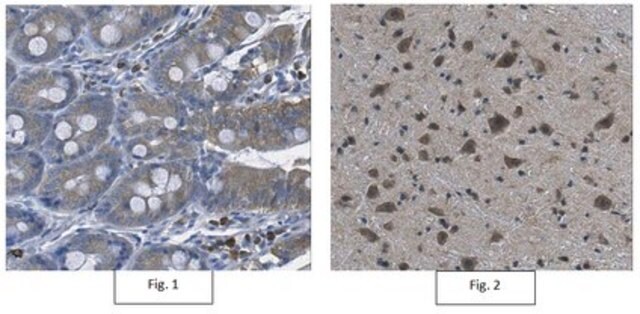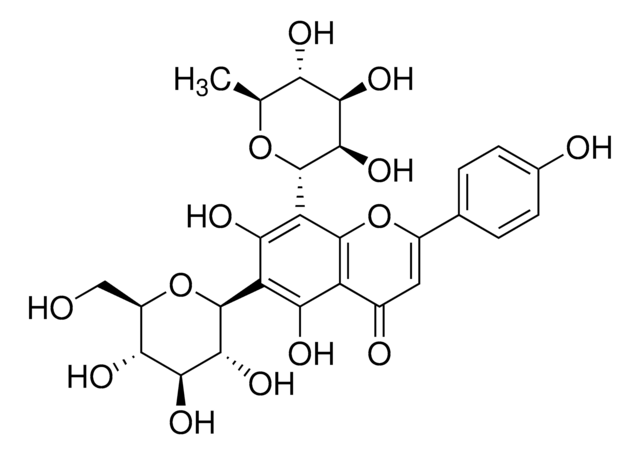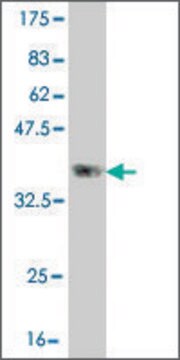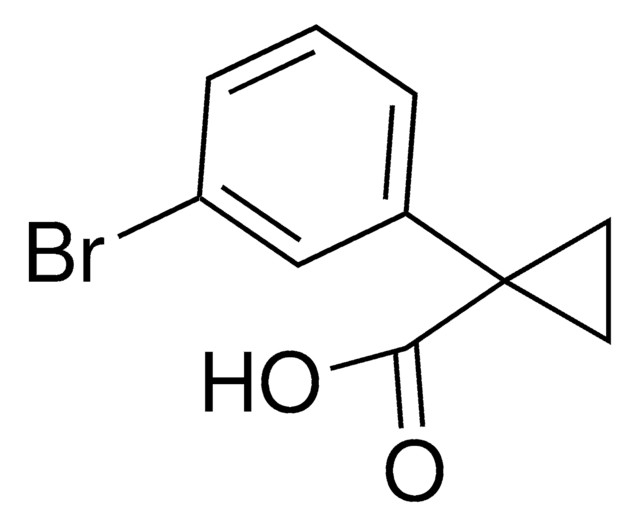108340
3-Hydroxy-2-quinoxalinecarboxylic acid
97%
Se connecterpour consulter vos tarifs contractuels et ceux de votre entreprise/organisme
About This Item
Formule empirique (notation de Hill) :
C9H6N2O3
Numéro CAS:
Poids moléculaire :
190.16
Numéro CE :
Numéro MDL:
Code UNSPSC :
12352100
ID de substance PubChem :
Nomenclature NACRES :
NA.22
Produits recommandés
Niveau de qualité
Essai
97%
Pf
267-268 °C (lit.)
Groupe fonctionnel
carboxylic acid
Chaîne SMILES
OC(=O)c1nc2ccccc2nc1O
InChI
1S/C9H6N2O3/c12-8-7(9(13)14)10-5-3-1-2-4-6(5)11-8/h1-4H,(H,11,12)(H,13,14)
Clé InChI
NMOWGWOAPRKWIR-UHFFFAOYSA-N
Catégories apparentées
Application
3-Hydroxy-2-quinoxalinecarboxylic acid was used to study the sorption of ionizable organic compounds to an estuarine sediment. It was used in the preparation of Zinc(II)-quinoxaline complexes which was characterized by X-ray crystallography and fluorescence spectroscopy.
Actions biochimiques/physiologiques
3-Hydroxy-2-quinoxalinecarboxylic acid is an antagonist of excitatory amino acids and possesses anticonvulsant properties. It inhibits the 22Na+ efflux produced in 22Na+-preloaded brain slices by N-methyl-D-aspartate and kainate.
Mention d'avertissement
Warning
Mentions de danger
Conseils de prudence
Classification des risques
Eye Irrit. 2 - Skin Irrit. 2 - STOT SE 3
Organes cibles
Respiratory system
Code de la classe de stockage
11 - Combustible Solids
Classe de danger pour l'eau (WGK)
WGK 3
Point d'éclair (°F)
Not applicable
Point d'éclair (°C)
Not applicable
Équipement de protection individuelle
dust mask type N95 (US), Eyeshields, Gloves
Faites votre choix parmi les versions les plus récentes :
Déjà en possession de ce produit ?
Retrouvez la documentation relative aux produits que vous avez récemment achetés dans la Bibliothèque de documents.
U Erez et al.
European journal of pharmacology, 110(1), 31-39 (1985-03-26)
Various aromatic acids have been investigated as putative ligands of excitatory amino acid receptors. 3-Hydroxy-2-quinoxalinecarboxylic acid (HQC), at 1 mM, was found to antagonize the 22Na+ efflux produced in 22Na+-preloaded brain slices by N-methyl-D-aspartate and kainate. The response to glutamate
Ken-Ichi Sakai et al.
Dalton transactions (Cambridge, England : 2003), 39(8), 1989-1995 (2010-02-12)
Zinc(ii)-quinoxaline complexes, [Zn(hqxc)(2)(py)(2)] and [Zn(hqxc)(2)(DMSO)(2)] (hqxc = 3-hydroxy-2-quinoxalinecarboxylate, py = pyridine, DMSO = dimethyl sulfoxide), were prepared and characterized by X-ray crystallography and fluorescence spectroscopy. In both complexes, the zinc ion is six-coordinated by two equatorial bidentate hqxc ligands with
Serdar Badoğlu et al.
Spectrochimica acta. Part A, Molecular and biomolecular spectroscopy, 101, 14-21 (2012-10-27)
The mid-IR and Raman spectra of 3-hydroxy-2-quinoxalinecarboxylic acid (3HQC) were recorded. These spectra were interpreted with the help of B3LYP/6-311++G(d,p) calculations and potential energy distribution (PED) analysis. As a result of the calculations, seven tautomers were determined among many stable
Cadmium (II) and calcium (II) complexes with N, O-bidentate ligands derived from pyrazinecarboxylic acid.
Barszcz B, et al.
Journal of Thermal Analysis and Calorimetry, 108(3), 971-978 (2012)
H Frenk et al.
Brain research, 373(1-2), 222-226 (1986-05-14)
Three compounds reportedly blocking the N-methyl-D-aspartate (NMDA) receptor, namely 2-amino-5-phosphonovalerate, gamma-D-glutamylglycine and 3-hydroxy-2-quinoxalinecarboxylic acid, were injected subdurally onto the cortex of freely moving rats. All 3 compounds effectively suppressed behavioral and electrographic seizure activity induced by strychnine, morphine and picrotoxin
Notre équipe de scientifiques dispose d'une expérience dans tous les secteurs de la recherche, notamment en sciences de la vie, science des matériaux, synthèse chimique, chromatographie, analyse et dans de nombreux autres domaines..
Contacter notre Service technique








